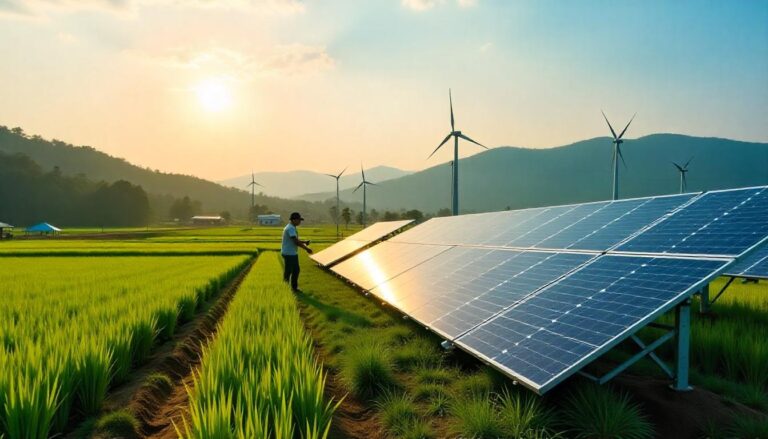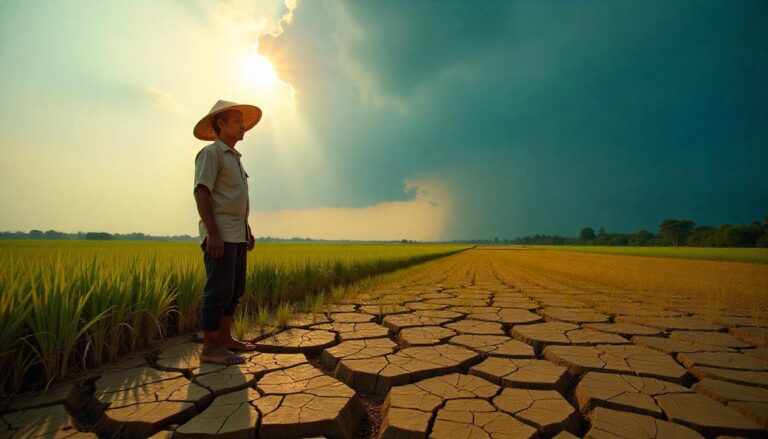10 Powerful Ways Cambodia Can Prevent Climate Change Starting Today

Cambodia stands at a pivotal moment in its environmental journey. As one of the nations most vulnerable to climate change, the country faces increasing threats from rising temperatures, erratic weather patterns, and environmental degradation. However, with strategic actions and collective effort, Cambodia can pave the way toward a sustainable and resilient future. Here are ten impactful strategies to combat climate change in Cambodia:
- 1. Embrace Renewable Energy Solutions
- 2. Combat Deforestation and Promote Reforestation
- 3. Enhance Waste Management Practices
- 4. Promote Sustainable Urban Mobility
- 5. Integrate Climate Education in Schools
- 6. Adopt Climate-Smart Agricultural Practices
- 7. Implement Green Building Standards
- 8. Support Green Innovation and Startups
- 9. Engage Communities in Climate Action
- 10. Strengthen Climate Policies and Enforcement
1. Embrace Renewable Energy Solutions
Transitioning to renewable energy is crucial for reducing greenhouse gas emissions. Cambodia has initiated steps by importing over 600 megawatts of clean energy from neighboring countries, including solar and hydropower from Laos, Vietnam, and Thailand. Additionally, the National Energy Efficiency Policy aims to transform energy consumption patterns, promoting energy efficiency across sectors.
2. Combat Deforestation and Promote Reforestation
Forests play a vital role in carbon sequestration. Between 2001 and 2023, Cambodia lost approximately 2.83 million hectares of tree cover, leading to significant carbon emissions.
Implementing community-based forest management and reforestation projects can help restore these vital ecosystems and reduce carbon footprints.
3. Enhance Waste Management Practices
Effective waste management is essential for mitigating environmental pollution. Phnom Penh alone generates over 3,500 tons of municipal waste daily, with plastic comprising about 20% of this total. Initiatives like the Solid Waste and Plastic Management Improvement Project aim to improve waste collection and promote recycling, contributing to a cleaner environment.
4. Promote Sustainable Urban Mobility
Transportation is a significant contributor to carbon emissions. The Sustainable Urban Mobility for All Initiative (SUMAI) seeks to improve urban traffic and transport systems by integrating data on traffic and air quality to guide policy decisions. Encouraging the use of electric vehicles and developing infrastructure for non-motorized transport can further reduce emissions.
5. Integrate Climate Education in Schools
Educating the younger generation about climate change is pivotal for long-term sustainability. Organizations like Green Lady Cambodia are pioneering educational initiatives that combine environmental awareness with health education, fostering a culture of environmental stewardship among youth.
6. Adopt Climate-Smart Agricultural Practices
Agriculture is both a victim and a contributor to climate change. The Food and Agriculture Organization (FAO) supports climate-smart agriculture in Cambodia, promoting practices that increase productivity while reducing greenhouse gas emissions. Techniques such as sustainable land management and the use of drought-resistant crops can enhance resilience.
7. Implement Green Building Standards
The construction sector significantly impacts the environment. The Cambodia Green Building Council (CamGBC) advocates for sustainable building practices, aiming to transform how buildings are designed, built, and operated to achieve net-zero emissions. Incorporating energy-efficient designs and materials can substantially reduce the carbon footprint of buildings.
8. Support Green Innovation and Startups
Innovation drives sustainable development. UNDP Cambodia has highlighted startups that offer solutions in energy, agriculture, and construction, contributing to climate adaptation and sustainable development goals. Supporting such enterprises can accelerate the transition to a green economy.
9. Engage Communities in Climate Action
Community involvement is crucial for the success of environmental initiatives. Programs that promote eco-friendly solutions and enhance climate resilience at the community level have shown promise in expanding sustainable economic opportunities. Empowering local communities ensures that climate actions are culturally appropriate and sustainable.
10. Strengthen Climate Policies and Enforcement
Robust policies are the backbone of effective climate action. Cambodia’s Long-Term Strategy for Carbon Neutrality outlines a roadmap to achieve carbon neutrality by 2050, emphasizing the need for stringent enforcement of environmental regulations and continuous policy development.
Conclusion:
Addressing climate change in Cambodia requires a multifaceted approach involving government policies, community engagement, and individual actions. By implementing these ten strategies, Cambodia can make significant strides toward a sustainable and resilient future.
Take Action Now:
- Educate Yourself and Others: Stay informed about climate issues and share knowledge within your community.
- Support Sustainable Practices: Choose eco-friendly products and support businesses that prioritize sustainability.
- Get Involved: Participate in local environmental initiatives and advocate for stronger climate policies.
Together, we can make a difference in combating climate change and preserving Cambodia’s natural heritage for future generations.



